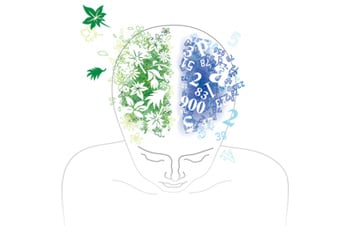A Buddhist Perspective on Neurofeedback “Treatment”

A dialogue between Dr. Brod and founder of Neurofeedback NY and meditation teacher Natalie Baker on the Buddhist perspective on neurofeedback. Posted originally on website www.eegym.com by Dr. Brod, MD Associate Clinical Professor, Psychiatry, Geffen UCLA School of Medicine
Dr Brod: I came across this post on a neurofeedback list-serve this week and asked the author, Natalie Baker, LMHC, if I could reproduce it on my blog. Natalie, whom I otherwise do not know, is making the point that transformation (meditation) and treatment are different even when they overlap. I am pleased she has allowed me to to reproduce her comments. It’s fascinating to bring up the question of whether an activity, such as meditation practice, that helps alleviate symptoms is therefore, a ‘treatment’. The question has arisen a lot in recent years as meditation has been introduced into more mainstream medical interventions for various conditions. In the Tibetan Buddhist view meditation is NOT a treatment. It is a practice without a goal. As a Buddhist teacher presenting meditation it is very important to make that distinction from a medical model where you try something because you want it to help you change–decrease pain, increase relaxation, lower blood pressure, improve concentration, etc. Upon hearing this distinction the intelligent student asks: “why should I practice meditation if it’s not going to help?” And the teacher responds with, “I didn’t say it wouldn’t help, I just said that wasn’t the point of the practice. There are many “side effects” of meditation, but they are not the point.” Then the student asks, “So what is the point?” And the teacher replies, “The point is to let go of having a point.” (At which point the student becomes very annoyed!) To understand why the teacher responds this way we have to understand the source of our unhappiness from a Buddhist point of view. The teachings say that our suffering arises from the habit of continuously creating a conceptual reference point. The most obvious one is the reference point of a “problem”. “I am a problem.” “There is a problem.” To experience the cessation of suffering we have to let go of our reference point, ie “our problem.” In short, awakening or Buddhahood is beyond thought, or pre-thought, however you want to conceptualize it. Without being cognizant of this distinction the student will inevitably give up on his or her mediation practice because his/her experience in practice will inevitably not conform with the student’s preconceived ideas about it. It is fascinating to me that here we have a device (NeurOptimal neurofeedback) that ‘helps’ the brain, but the technology comes from the view of practice not treatment. Hmmm….are physical (brain) and spiritual (awareness) mirrors of each other?
Natalie Baker, LMHC is the founder of Neurofeedback NY, Lead NeurOptimal® Neurofeedback Trainer and also a Buddhist Meditation Teacher.
Contact us to schedule a neurofeedback session in Manhattan or Brooklyn Learn more about neurofeedback Training Options & Costs
Dr Brod: I came across this post on a neurofeedback list-serve this week and asked the author, Natalie Baker, LMHC, if I could reproduce it on my blog. Natalie, whom I otherwise do not know, is making the point that transformation (meditation) and treatment are different even when they overlap. I am pleased she has allowed me to to reproduce her comments. It’s fascinating to bring up the question of whether an activity, such as meditation practice, that helps alleviate symptoms is therefore, a ‘treatment’. The question has arisen a lot in recent years as meditation has been introduced into more mainstream medical interventions for various conditions. In the Tibetan Buddhist view meditation is NOT a treatment. It is a practice without a goal. As a Buddhist teacher presenting meditation it is very important to make that distinction from a medical model where you try something because you want it to help you change–decrease pain, increase relaxation, lower blood pressure, improve concentration, etc. Upon hearing this distinction the intelligent student asks: “why should I practice meditation if it’s not going to help?” And the teacher responds with, “I didn’t say it wouldn’t help, I just said that wasn’t the point of the practice. There are many “side effects” of meditation, but they are not the point.” Then the student asks, “So what is the point?” And the teacher replies, “The point is to let go of having a point.” (At which point the student becomes very annoyed!) To understand why the teacher responds this way we have to understand the source of our unhappiness from a Buddhist point of view. The teachings say that our suffering arises from the habit of continuously creating a conceptual reference point. The most obvious one is the reference point of a “problem”. “I am a problem.” “There is a problem.” To experience the cessation of suffering we have to let go of our reference point, ie “our problem.” In short, awakening or Buddhahood is beyond thought, or pre-thought, however you want to conceptualize it. Without being cognizant of this distinction the student will inevitably give up on his or her mediation practice because his/her experience in practice will inevitably not conform with the student’s preconceived ideas about it. It is fascinating to me that here we have a device (NeurOptimal neurofeedback) that ‘helps’ the brain, but the technology comes from the view of practice not treatment. Hmmm….are physical (brain) and spiritual (awareness) mirrors of each other?
Natalie Baker, LMHC is the founder of Neurofeedback NY, Lead NeurOptimal® Neurofeedback Trainer and also a Buddhist Meditation Teacher.
Contact us to schedule a neurofeedback session in Manhattan or Brooklyn Learn more about neurofeedback Training Options & Costs
Do you like Neurofeedback NY? Share your feedback with us.
Schedule your session, rent your device or just say hello!